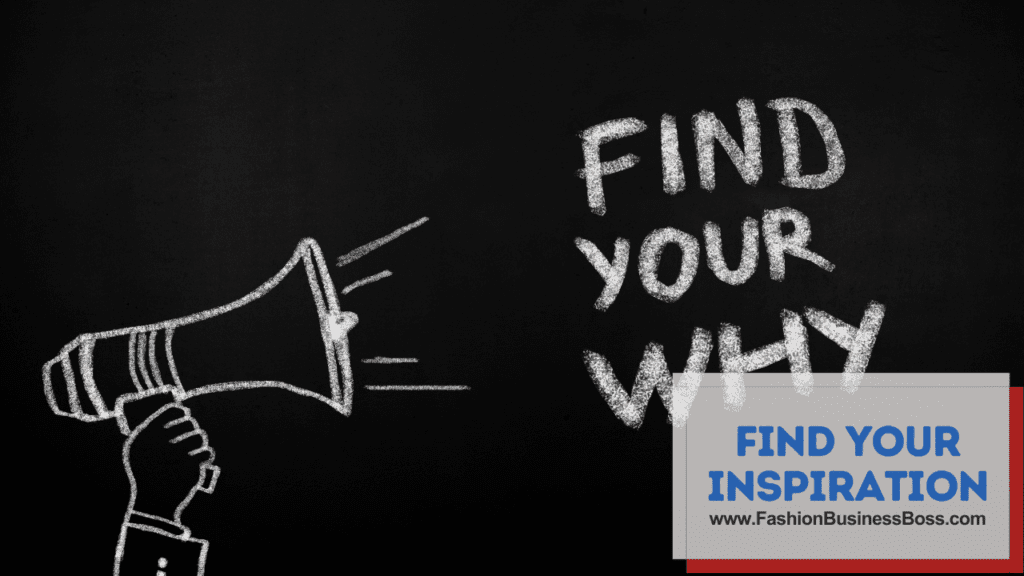Creating your own fashion clothes is a thrilling way to express your unique style and stand out from the crowd. Whether you’re a seasoned designer or just starting, this guide will walk you through the process, from ideation to a finished piece that reflects your personality.
To design your own fashion clothes, start with inspiration from your surroundings. Sketch your vision, choose quality materials, and sew with care. Personalize your designs to create a unique style that stands out.
In this article, let’s dive into the world of fashion design and unlock your creativity.
Find Your Inspiration

Discovering your inspiration is the initial step in creating your own fashion clothes. It’s important to gather ideas and influences before you start sketching your designs. You can find inspiration in various places, such as fashion magazines, online platforms like Pinterest, or simply by taking a leisurely stroll in a park.
Fashion magazines provide a wealth of ideas, showcasing the latest trends and designs. Online platforms like Pinterest allow you to curate collections of images that resonate with your style. These visual sources can trigger your creativity and guide your design process.
Furthermore, the world around you can be a rich source of inspiration. Nature, architecture, or even the colors and patterns you encounter in your daily life can influence your design choices. By being observant and open to inspiration from diverse sources, you’ll have a strong foundation on which to build your unique fashion creations.
Read more about: Clothing Store Startup: Designing a Fashionable Future
Sketch Your Vision
Once you’ve gathered inspiration, the next step is to put your ideas on paper. You don’t have to be a skilled artist for this, as these sketches serve as a guide for your work. Concentrate on capturing the outline, intricacies, and color choices of your design.
Begin by drawing a rough representation of your clothing concept. Pay attention to the overall shape and form, outlining the main features of your garment. Don’t worry about creating a masterpiece; these sketches are personal reference points.
Refine your sketches gradually, adding more details to depict the design accurately. Consider the placement of buttons, zippers, and any embellishments you plan to include. Experiment with different color combinations until you find the one that best conveys your vision.
Remember that these sketches are a flexible canvas for your ideas. Feel free to make revisions as you go along, refining your design until it aligns with your vision. Your sketches will serve as a valuable roadmap when you move on to the next stages of creating your fashion clothes.
Choose Your Materials
Picking the appropriate materials is a crucial aspect of turning your fashion design into reality. Your choice of materials will greatly influence the outcome of your creation. When making these decisions, think about the fabric, buttons, zippers, and any decorative elements that will harmonize with your design.
Begin by carefully considering the type of fabric you want to use. Fabrics come in various textures, thicknesses, and colors, and your choice will affect how your garment looks and feels. Think about the practicality and comfort of the fabric for the intended purpose of your clothing.
Buttons, zippers, and other fasteners play a functional and aesthetic role in your design. Select ones that align with your style and the overall look you want to achieve. Pay attention to the size, color, and design of these components.
Embellishments like sequins, embroidery, or lace can add a unique touch to your clothing. Ensure they complement the overall theme and purpose of your design.
Using high-quality materials is essential, as they can enhance the final product’s durability and appearance. Quality materials not only make your creation look better but also feel more comfortable when worn. So, make thoughtful choices when selecting your materials, and you’ll be on your way to bringing your fashion vision to life.
Pattern Making

Pattern making is a crucial step in the process of creating your own fashion clothes. If you’re just starting and aren’t familiar with pattern making, there are several options available to you.
One option is to use pre-made templates. These templates are like ready-made patterns that you can adjust to fit your design. They are especially useful for beginners as they provide a starting point and reduce the complexity of creating a pattern from scratch.
Another option is to enroll in a basic sewing class. Many sewing classes cover the fundamentals of pattern making. These classes can provide you with hands-on experience and guidance to create patterns that match your design.
For those who prefer a more professional touch, you can collaborate with an experienced pattern maker. A pattern maker is skilled in creating precise patterns tailored to your design. They will ensure that the measurements and proportions are accurate, which is essential for a well-fitting garment.
In pattern making, precision is crucial because patterns serve as the blueprint for your clothing. Whether you choose templates, sewing classes, or a pattern maker, each option will help you create patterns that bring your fashion design to life with accuracy and consistency.
Read more about: Clothing Retail 101: Starting Your Store
Sewing
Now, it’s time to dive into the enjoyable phase of sewing. If you’re new to sewing, it’s wise to begin with uncomplicated designs and progressively move to more intricate ones. This gradual approach allows you to build your skills and confidence over time.
When you start sewing, remember not to rush through the process. It’s essential to take your time and concentrate on each seam you create. Ensuring that every stitch is well-executed is key to producing a finished garment that looks and feels great.
For those who lack confidence in their sewing abilities, consider the option of enrolling in a sewing class. Sewing classes offer valuable guidance, teaching you the fundamental techniques and providing hands-on experience. With proper instruction and practice, you can enhance your sewing skills and tackle more advanced projects in the future.
Whether you’re a beginner or have some sewing experience, patience and practice are your allies in this creative journey. By focusing on the quality of your work and continuing to learn, you’ll steadily improve your sewing skills and bring your fashion designs to life with skill and precision.
Fitting and Adjustments
After your garment has started to come together, it’s time to focus on fitting and making necessary adjustments. Trying on the garment at this stage is essential. It allows you to identify areas that may need alterations to achieve a perfect fit.
The fitting process ensures that your creation not only looks good but also feels comfortable when worn. Keep in mind that people come in various shapes and sizes, so adjustments might be necessary to accommodate different body types.
When making adjustments, pay attention to the fit around the shoulders, chest, waist, hips, and any other critical areas. You may need to take in or let out seams, shorten or lengthen hems, or modify other aspects of the garment to achieve the desired fit.
Remember that the goal is to ensure that your fashion creation not only matches your design vision but also suits the person who will be wearing it. Focusing on fitting and adjustments ensures that your garment is not only aesthetically pleasing but also comfortable and well-suited for its intended purpose.
Attention to Details

The beauty of your fashion design truly resides in the finer details. These details are what make your creation exceptional and unique. To enhance your garment, it’s essential to consider incorporating special touches.
One way to add distinction is by including unique embellishments. These could be buttons, beads, sequins, or other decorative elements that complement your design. Such embellishments can bring a touch of elegance or playfulness to your creation.
Embroidery is another option to elevate your garment. Intricate stitching patterns or designs can add texture and personality to your piece. Whether it’s a subtle monogram or an elaborate motif, embroidery can make your creation stand out.
Custom labels are also worth considering. They not only add a professional touch but also personalize your garment. A custom label with your brand or name can be a subtle yet impactful detail that sets your creation apart.
Remember, it’s the small touches like these that can take your fashion design to the next level. They add character and individuality to your creation, making it truly one-of-a-kind. By paying attention to these details, you ensure that your fashion clothes reflect your unique style and creativity.
Read more about: Clothing Manufacturing Cost Estimation: Navigating the Challenges
Test Wear and Feedback
Before revealing your design to a wider audience, it’s essential to thoroughly test it by wearing it yourself. This real-life trial helps you evaluate how the garment feels and performs during regular activities.
Wearing the garment allows you to assess its comfort, fit, and functionality. Take note of any discomfort, restrictions in movement, or other issues that may arise while wearing it. This firsthand experience is valuable in identifying areas that require improvement.
Seek feedback from friends and family who can provide valuable insights from an outsider’s perspective. They can offer opinions on the design, comfort, and overall impression of your creation. Constructive feedback is crucial for fine-tuning any remaining issues and making necessary adjustments.
By wearing your fashion creation and gathering feedback, you ensure that it not only looks good on paper but also functions well in real life. This practical testing phase is a vital step in perfecting your design and ensuring that it meets both your vision and the expectations of those who will wear it.
Photography and Documentation
Photography and documentation play a pivotal role in presenting your fashion creation effectively. To showcase your design, you need to capture high-quality photographs that highlight its features.
Investing in good lighting is essential for producing clear and well-lit photos. Adequate lighting ensures that the colors and details of your garment are accurately represented. Natural daylight or well-placed artificial lighting can significantly improve the quality of your images.
Consider the angles from which you capture your garment. Different perspectives can emphasize specific design elements or details. Experiment with various angles to find the ones that best showcase your creation.
When documenting your fashion clothes, pay attention to the small details. Capture close-up shots of intricate stitching, embellishments, and unique features. These close-ups provide a comprehensive view of your design’s craftsmanship.
These images will serve as a visual portfolio for your online presence, such as your blog or social media. Clear, well-composed photographs not only attract attention but also effectively convey the essence of your fashion creation. By investing time and effort into photography and documentation, you can ensure that your design shines in the digital world.
Personal Branding and Signature Style

As you progress in your fashion design journey, it’s valuable to work on creating a distinct and recognizable style for your creations. This style can be thought of as your personal brand in the fashion world, helping you stand out amidst competition.
To establish your personal brand, focus on defining specific design elements, a consistent color palette, or recurring themes that weave through your collections. These consistent elements serve as the foundation of your signature style.
Your goal is for people to easily identify your fashion clothes by their unique characteristics. This recognition will draw attention to your work and create a loyal following among your audience.
By developing and nurturing your personal brand, you establish a clear identity in the fashion industry. This identity not only sets you apart but also makes your fashion clothes instantly recognizable and desirable to those who appreciate your distinct style. It’s a strategic approach to carving your niche and making a lasting mark in the world of fashion design.
Read more about: Clothing Store Startup: Designing a Fashionable Future
Conclusion
Designing your own fashion clothes is a fulfilling journey that allows you to express your individuality. With dedication, creativity, and attention to detail, you can turn your fashion dreams into reality. Remember, the fashion world is ever-evolving, so keep experimenting, learning, and growing as a designer. Your unique style has the potential to inspire others and leave a lasting mark in the fashion industry.
Frequently Asked Questions

Q: How is fashion clothing design initiated?
A: Fashion clothing design starts with the gathering of inspiration, followed by sketching ideas, the selection of appropriate materials, creating patterns, and then proceeding to the sewing phase.
Q: What are the fundamental materials for fashion design?
A: Essential materials for fashion design include fabric, buttons, zippers, sewing equipment, patterns, and potential embellishments or trims.
Q: How can sewing skills be enhanced, particularly for beginners?
A: Beginners can improve their sewing skills by enrolling in sewing classes, practicing with simple projects, and gradually progressing to more complex designs. Learning from experienced sewers is also advisable.
Q: What is the significance of sustainable fashion in clothing design?
A: Sustainable fashion is important in clothing design as it reduces environmental impact and promotes ethical practices. It involves utilizing eco-friendly materials, ethical manufacturing processes, and minimizing waste.
Q: How can a personal brand be established in the field of fashion design?
A: To establish a personal brand in fashion design, one can focus on creating a signature style that distinguishes their creations. Consistency in design elements, color schemes, and themes contributes to building a recognizable brand.
To learn more about starting your own clothing business, check out my startup documents here.
Please note that the contents of this blog are for informational and entertainment purposes only and should not be construed as legal advice. Any action taken based on the information provided in this blog is solely at your own risk. Additionally, all images used in this blog are generated under the CC0 license of Creative Commons, which means they are free to use for any purpose without attribution.

Meet Shawn Chun: Entrepreneur and Fashion Business Fan.
I’m a happy individual who happens to be an entrepreneur. I have owned several types of businesses in my life from a coffee shop to an import and export business to an online review business plus a few more and now I create online resources for those interested in starting new ventures. It’s demanding work but I love it. I do it for those passionate about their business and their goals. That’s why when I meet a designer or boutique owner at a craft fair, farmers market, retail location or anywhere else I see myself. I know how hard the struggle is to retain clients, find good employees and keep the business growing all while trying to stay competitive.
That’s why I created Fashion Business Boss: I want to help fashion business owners like you build a thriving business that brings you endless joy and supports your ideal lifestyle.

